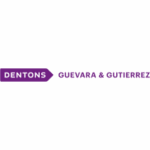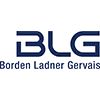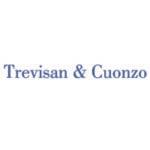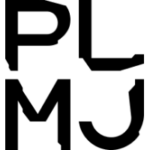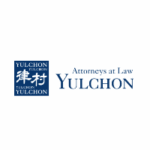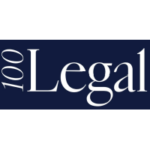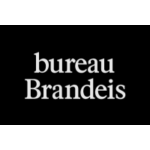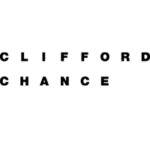-
What types of conduct and causes of action can be relied upon as the basis of a competition damages claim?
The fundamental condition for liability to pay damages under Article 57 of Law No. 4054 on the Protection of Competition (“Competition Law“) is that conduct infringing the Competition Law must have caused damage to other undertakings—such as competitors, exclusive distributors, agents, wholesalers, retailers—or to other market participants and consumers. In this context, the types of conduct prohibited by the Competition Law generally include:
- restrictive agreements and concerted practices (Article 4);
- abuse of dominance (Article 6);
- anti-competitive mergers and acquisitions (Article 7).
-
What is required (e.g. in terms of procedural formalities and standard of pleading) in order to commence a competition damages claim?
In Türkiye, a claimant pursuing a competition-based damages action must comply with the procedural rules of Turkish civil procedure law, in particular the Code of Civil Procedure No. 6100 (“Civil Procedure Law“).
There is no dedicated procedural regime for competition damages claims under Turkish law. Accordingly, claimants are subject to the general tort-based civil litigation procedure. The statement of claim must be submitted in writing and must include the elements set out in Article 119 of the Civil Procedure Law, namely:
- the name of the court;
- the identities of the parties and, if applicable, their legal representatives;
- a clear explanation of the factual and legal grounds of the claim;
- the subject matter of the claim and, in actions relating to pecuniary rights, its monetary value;
- supporting evidence (including, where applicable, a final decision of the Turkish Competition Board);
- the legal basis for the damages claim (e.g. Articles 57–58 of Competition Law and Articles 49–58 of the Turkish Code of Obligations);
- the signature of the claimant, or where applicable, of their legal representative or attorney.
Furthermore, if both parties to a competition damages dispute are merchants, recourse to mandatory mediation is a procedural prerequisite for claims relating to commercial receivables and compensation. A claim cannot be brought before the court unless mediation has been attempted. If the parties fail to reach a settlement during the mediation process, the claimant may then file a lawsuit.
-
What remedies are available to claimants in competition damages claims?
Under Turkish law, parties damaged by competition law infringements may claim compensation pursuant to Articles 57 and 58 of the Competition Law, relying on the general provisions governing tort liability. Within this framework, claimants may seek compensation both for actual loss (damnum emergens) and loss of profit (lucrum cessans).
Where the infringement is committed wilfully or through gross negligence, the court may award damages of up to three times the actual damage suffered. Additionally, it is possible to bring a declaratory action solely to establish the existence of an infringement.
Aside from these, court decisions may also give rise to ancillary legal consequences such as awards of litigation costs, attorneys’ fees, and interest. In summary, the principal remedy in competition damages actions is compensation for damage suffered, which may include material damages and statutory interest; in cases of serious fault, punitive (multiplied) damages may also be awarded.
-
What is the measure of damages? To what extent is joint and several liability recognised in competition damages claims? Are there any exceptions (e.g. for leniency applicants)?
In the assessment of damage, economic analyses, comparative market data and expert reports are commonly used. Damages are calculated based on the difference between the actual situation and the hypothetical scenario that would have occurred in the absence of the infringement. This approach, also known as the “difference theory”, relies on the notion that competition law infringements—particularly cartels—artificially inflate prices. The theory aims to compensate consumers who paid more than they otherwise would have, due to the price increase imposed by cartel members.
Joint and several liability applies where more than one undertaking has participated in the infringement, as provided under Article 57 of the Competition Law. A claim may be brought against any one, several, or all of the infringing undertakings. In the case of infringements committed by affiliated undertakings, the action may be brought against either the parent or subsidiary, depending on the role played in the prohibited conduct.
There is no statutory provision under Turkish law granting immunity from private damages claims to undertakings or individuals who have applied for leniency.
-
What are the relevant limitation periods for competition damages claims? How can they be suspended or interrupted?
While the Competition Law sets out limitation periods for administrative fines, it does not regulate the statute of limitations for civil liability claims for damages. In both legal scholarship and case law, including the Court of Cassation, it is widely accepted that such claims are subject to the general rules of tort liability. Consequently, Article 72 of the Turkish Code of Obligations No. 6098 (“Code of Obligation“) applies. This provides for:
- a two-year ordinary limitation period from the date the claimant becomes aware of both the harm and the liable party; and
- a ten-year maximum limitation period from the date of the competition infringement.
- In addition, the final sentence of Article 72(1) of the Code of Obligation provides that, where the act constitutes a criminal offence and the applicable criminal statute of limitations is longer, the longer period shall also apply to the civil action.
Violations of Articles 4 and 6 of the Competition Law give rise to substantive administrative fines pursuant to Article 16/3. These administrative fines are classified as “misdemeanours” under Articles 2 and 16/1 of the Misdemeanours Law No. 5326, and are subject to an eight-year limitation period under Article 20/3 of the Misdemeanours Law. It is argued that, based on the cross-reference in the final sentence of Article 72/1 of the Code of Obligation, this eight-year limitation period should also apply to actions for damages brought under Article 57 of the Competition Law. According to this view, the limitation period should start from the date on which the infringement occurred or ceased, rather than from the date on which the harm and the liable party became known—contrary to the prevailing view in legal doctrine and the established practice of the Court of Cassation.
The suspension and interruption of limitation periods are regulated under Articles 153 to 158 of the Code of Obligation. “Suspension” refers to the temporary halt of the limitation period due to a legal obstacle, after which the clock resumes from where it left off once the obstacle is removed. “Interruption” means that the limitation period ends due to a legal ground, and once that ground ceases to exist, a new period begins. Under Article 154/2 of the Code of Obligation, limitation periods are interrupted when the claimant files a lawsuit or a defence, initiates enforcement proceedings, or files a claim in bankruptcy proceedings.
By contrast, filing a complaint before the Competition Board (“Board“) against the liable undertaking does not suspend or interrupt the limitation period. Such a complaint is only relevant for determining the date on which the harm and the liable party became known. Similarly, the initiation of an investigation by the Board against the liable undertaking does not, in itself, constitute a ground for suspension or interruption. Indeed, there is no provision under Turkish law that recognises such investigative actions by the Board as having any effect on the running of the limitation period.
-
Which local courts and/or tribunals deal with competition damages claims?
As a rule, disputes concerning claims for damages are adjudicated by civil courts. Pursuant to Article 2/2 of the Civil Procedure Law, the general courts of first instance with jurisdiction over competition-based damages claims are the civil courts of first instance. Accordingly, in actions for damages arising from competition law infringements, the general competent court is the civil court of first instance.
However, depending on the nature of the claim and the legal status of the parties, the competent court may vary. In particular, where one of the parties qualifies as a “merchant”, the action must be filed before the commercial court of first instance. In practice, as the parties to such disputes are frequently merchants, these cases are generally considered commercial disputes and are therefore handled by the commercial courts of first instance.
That said, where the claimant is a final purchaser with consumer status (e.g. an individual consumer), there are precedents in which the consumer courts have been deemed the competent forum for hearing damages claims arising from competition infringements.
-
How does the court determine whether it has jurisdiction over a competition damages claim?
Since competition damages claims are classified in practice as tort claims under Turkish law, the competent court may be determined in accordance with Article 16 of the Civil Procedure Law. Under this provision, the following courts may have jurisdiction:
- the court where the tortious act was committed;
- the court where the harm occurred or is likely to occur; or
- the court of the claimant’s domicile.
In addition, pursuant to the general rule of jurisdiction set out in Article 6/1 of the Civil Procedure Law, the court of the defendant’s domicile at the time the action is filed shall also have jurisdiction.
Moreover, if the competition infringement arises in connection with a contractual relationship (e.g. a distribution agreement involving vertical restraints), the court at the place of performance of the contract may also be competent, pursuant to Article 10 of the Civil Procedure Law.
-
How does the court determine what law will apply to the competition damages claim?
Article 38/1 of the International Private and Procedural Law Act No. 5718 provides that claims arising from the restriction of competition are governed by the law of the country where the market affected by the restriction is located. Accordingly, any competition law infringement that directly affects the Turkish market is subject to Turkish law.
-
What is the applicable standard of proof?
Persons alleging harm resulting from a competition law infringement may assert their claims through a civil action for damages before the competent courts. In such cases, claims for compensation are assessed under the tort liability provisions set out in Article 49 of the Code of Obligations. Accordingly, the claimant is required to prove:
- the existence of an unlawful act;
- the occurrence of damage;
- fault on the part of the infringer; and
- a causal link between the competition law infringement and the damage suffered.
However, where the infringement has already been established by the Board, the claimant’s burden of proof may be eased. In such circumstances, courts may apply a lower evidentiary threshold, such as the standards of reasonable suspicion or high probability.
-
To what extent are local courts bound by the infringement decisions of (domestic or foreign) competition authorities?
The Court of Cassation takes the view that, in competition damages claims, the decision of the Board establishing the infringement must first become final. Therefore, if the Board’s decision is not yet final, it should be treated as a prejudicial issue by the court. Otherwise, the claimant would not be able to prove the existence of an unlawful act until the decision becomes legally binding. Indeed, in its decision dated 13 April 2015 (Case No. 2015/15 E., 2015/5128 K.), the 11th Civil Chamber of the Court of Cassation held that the outcome of the appeal before the Council of State concerning the Board’s decision must be awaited. Although there have been instances in which courts rendered judgments without waiting for the finalisation of the Board’s decision, this approach is now outdated and no longer preferred in current practice.
Turkish courts are not legally bound by the decisions of foreign competition authorities (such as the European Commission or the US Federal Trade Commission). However, such decisions may serve as persuasive evidence—particularly in multi-jurisdictional infringement cases such as international cartels. In practice, the weight given to foreign decisions depends on the specific circumstances of the case, the content of the decision, and its relevance to the Turkish market. To date, there is no explicit guidance or precedent from the Court of Cassation specifically addressing this matter.
-
To what extent can a private damages action proceed while related public enforcement action is pending? Is there a procedure permitting enforcers to stay a private action while the public enforcement action is pending?
Where the tortious act also constitutes a criminal offence and the applicable criminal statute of limitations is longer than the periods set out in Article 72/1 of the Code of Obligations, the longer criminal limitation period shall apply to civil claims arising from the tort.
Under Turkish law, there is no statutory provision that requires civil proceedings to be suspended pending the conclusion of related criminal proceedings. However, in practice, and in line with the general principle reflected in the relevant provisions of the Civil Procedure Law, if there is an ongoing criminal investigation or prosecution concerning the same subject matter, civil courts may treat the criminal proceedings as a prejudicial issue and suspend the civil action until the criminal court delivers its decision.
-
What, if any, mechanisms are available to aggregate competition damages claims (e.g. class actions, assignment/claims vehicles, or consolidation of claims through case management)? What, if any, threshold criteria have to be met?
Class actions serve important functions in the field of competition law. By reducing litigation costs, they allow claims for small amounts of damages that would not otherwise be pursued; they may also expose anti-competitive conduct to scrutiny by enabling lawsuits involving millions of consumers, thereby increasing public visibility of the infringement. As a result, class actions may lead to behavioural change and enhance deterrence.
However, the concept of class actions diverges from the principles and doctrines of Turkish law. For instance, under Turkish law, no one may bring a lawsuit to protect the personal rights of another person, except in certain limited cases. A claimant may only bring a claim on their own behalf and only if they have a direct, personal interest in the subject matter. Therefore, class actions constitute an exception to the general rule that a lawsuit may only be brought to protect the claimant’s own individual interest.
The incompatibility of class actions with the Turkish legal system is also evident in the context of damages claims. Since liability for damages arising from competition law infringements is considered a form of tort liability under Turkish law, claimants are required to prove both fault and a causal link between the unlawful conduct and the harm suffered. By contrast, in class actions, damages may be assessed on a group basis rather than on an individual basis in accordance with general tort rules.
Studies of various class action models have suggested that the most effective method for deterring competition infringements would be an opt-in group action model, in which each group member receives compensation based on their actual loss. However, it is considered unlikely that such a model could be implemented within the Turkish legal framework in the short term.
-
Are there any defences (e.g. pass on) which are unique to competition damages cases? Which party bears the burden of proof?
In cases involving competition law infringements, initial purchasers who are unlawfully exposed to inflated prices may choose to pass on the overcharge to their own customers, rather than bearing the cost themselves. Where such passing-on occurs, the defendant undertakings responsible for the infringement may argue that the direct purchasers—now claimants—did not in fact suffer any actual harm, as the increased cost was transferred downstream. This line of argument is referred to as the “passing-on defence” in competition damages litigation.
Neither Turkish competition law nor the existing case law explicitly recognises the passing-on defence in private damages actions. This type of defence has not yet been tested in Turkish competition law practice, and there are no publicly available court decisions or judgments in which it has been examined.
The burden of proof regarding the alleged passing-on of the overcharge lies with the defendant, who may also request a reasonable explanation or evidence from the claimant or a third party to support this position.
-
Is expert evidence permitted in competition litigation, and, if so, how is it used? Is the expert appointed by the court or the parties and what duties do they owe?
Expert evidence may be admitted in competition law cases. It is frequently relied upon in relation to technical matters such as the calculation of damages, market structure, and causation analysis. Pursuant to Article 266 of the Civil Procedure Law, expert evidence is considered a discretionary form of evidence and is typically commissioned by the court, either ex officio or, in some cases, upon request by the parties.
In addition, parties are permitted to submit their own expert opinions or reports. Whether such party-submitted reports are given evidentiary weight remains at the discretion of the court.
-
Describe the trial process. Who is the decision-maker at trial? How is evidence dealt with? Is it written or oral, and what are the rules on cross-examination?
Competition damages claims are not subject to a specific procedural regime under Turkish law; thus, the general rules of civil procedure apply. These cases are typically heard at first instance by commercial courts, and the case is adjudicated by a single judge or, where applicable, a judicial panel.
The evidentiary system may involve a variety of materials, including written documents, official reports (in particular, decisions of the Board), witness testimony, expert opinions, and on-site inspections. Proving that harm has resulted from a competition infringement often requires technical analysis, and the presentation of evidence may therefore be complex. All evidence must be obtained in compliance with legal requirements.
The litigation process comprises both written and oral stages. The parties present their claims and defences through written submissions; once the exchange of pleadings is complete, oral hearings may be held, especially for the examination of witnesses or experts.
While Turkish law does not recognise the institution of cross-examination, it does allow for direct questioning. Direct questioning is conducted by the judge; no other party (including experts) may interrogate witnesses. However, legal counsel for the parties may ask direct questions to witnesses, provided they do not disrupt the order of the proceedings. The parties themselves may only put questions to witnesses through the judge.
-
How long does it typically take from commencing proceedings to get to trial? Is there an appeal process? How many levels of appeal are possible?
In Turkish law, the first hearing in a competition damages claim typically takes place 4 to 8 months after the lawsuit is filed. This time frame for the first hearing may vary depending on various factors such as the workload of the court where the case is filed, the complexity of the file, the number of parties, the status of notifications to be made, and whether there are deficiencies in the petition.
Following the preliminary hearing, the court proceeds to the investigation phase, during which the evidence submitted by the parties is collected, and if deemed necessary, expert examination and expert reports are obtained. After the collection of evidence, the court examines the file on the merits and renders its final decision. This trial process may last on average between 1.5 to 2 years, depending on the judicial review process of the Board’s decision on which the case is based. If the judicial process concerning the Board’s decision has not yet been concluded, the court usually waits for the said decision to become final, which may prolong the trial duration.
In Turkish law, there is a three-tier review system for competition law cases. Appeals against first-instance court decisions may be filed with the relevant Regional Court of Appeal provided that the legal monetary thresholds are met. While appeal is a legal remedy, unlike the cassation remedy, it involves not only the review of the first-instance court’s decision but also, if necessary, the conduct of a new trial and rendering a judgment as a court of merit.
The cassation remedy aims at the judicial review of decisions given by the appellate court. If certain legal conditions are met and the legal monetary thresholds are satisfied, an application for cassation review to the Court of Cassation may be made against the decision rendered by the appellate court following the appeal examination.
-
Do leniency recipients receive any benefit in the damages litigation context?
In Turkish law, no legal protection is provided within the scope of private law for parties benefiting from the leniency mechanism regarding competition violations in competition damages claims that may be filed. In this context, filing a leniency application does not create any material or procedural advantage or exemption. Undertakings that submit a leniency application may only be exempted from administrative fines.
-
How does the court approach the assessment of loss in competition damages cases? Are “umbrella effects” recognised? Is any particular economic methodology favoured by the court?
Unlawful price increases caused by anti-competitive conduct are generally discussed either in the context of the vertical harm they cause or in terms of the harm suffered by the competitors of the infringing undertakings. However, the concept of the umbrella effect addresses the damages caused by such violations beyond these two groups. In other words, the liability of cartel members that artificially increase prices in the market is discussed in terms of the damages caused across the market, particularly on the customers of their competitors.
First, the umbrella effect is only relevant if the competition infringement causes an increase in market prices; exclusionary practices do not lead to an umbrella effect as they do not influence the prices applied by competitors. Second, there must be a causal link between the price increases implemented by competitors and the cartel in the market, meaning that price increases should not be attributable to factors other than the umbrella effect.
Although the umbrella effect is not explicitly regulated under the Competition Law or the Directive 2014/104/EU on Antitrust Damages Actions, the Court of Justice of the European Union (“CJEU”) allows such damages claims. Considering the practice in the source EU law, it can be said that damages claims arising from the umbrella effect may be allowed where the claimant can prove the damage and the causal link. Apart from this, Turkish courts may use economic methods such as comparative market analysis and regression analysis to calculate competition damages.
-
How is interest calculated in competition damages cases?
In compensation claims arising from acts constituting a violation of competition law, the calculation of interest varies depending on the nature of the damage and the legal status of the parties. Since the provisions on torts are generally applied in such cases, the interest is considered as default interest. If both parties are merchants, commercial default interest is applied pursuant to the Turkish Commercial Code (“Commercial Code”); in cases where one of the parties is not a merchant, the statutory interest rate stipulated under the Code of Obligations is taken as the basis.
-
Can a defendant seek contribution or indemnity from other defendants? On what basis is liability allocated between defendants?
In cases where multiple undertakings act jointly in violation of competition law, these undertakings are held jointly and severally liable for the damage caused. This is explicitly regulated under Article 57 of the Competition Law. In cases where multiple parties are liable for the same damage, the proportion of liability is determined by taking into account the degree of fault of each party, the unlawfulness of their conduct, and the severity of the harm caused to society or the market. However, since the liability is of a joint and several nature from the perspective of the injured party, the claimant may demand the full compensation from any one of the undertakings.
In this context, if any undertaking is required to pay the full amount of the damage and the payment made exceeds the proportion attributable to its own fault, the undertaking that made the excessive payment has a right of recourse against the other undertakings responsible for the damage, pursuant to Article 62 of the Code of Obligations. In this way, each undertaking bears the compensation burden proportionally, according to its degree of fault and the severity of its conduct. This mechanism aims to ensure both the full protection of the injured party’s rights and a fair allocation of liability among the infringing undertakings.
-
In what circumstances, if any, can a competition damages claim be disposed of (in whole or in part) without a full trial?
In Turkish law, although compensation claims based on competition law infringements are filed to be assessed through a full trial on the merits, in some cases, the proceedings may be terminated at the preliminary stage or at the outset of the case without proceeding to a full examination. Such situations usually arise due to procedural deficiencies or preliminary issues impacting the case’s merits..
First of all, the claim may be dismissed on procedural grounds. In particular, if the lawsuit is filed before a court lacking jurisdiction or competence, or if a fundamental procedural requirement such as legal interest, capacity to be a party, or capacity to sue is missing, the court will issue a procedural dismissal decision without examining the merits of the case.
In addition, preliminary objections raised by the defendant within the prescribed period may also terminate the proceedings. If the court finds such objections—particularly the existence of a valid arbitration agreement, objections to jurisdiction, or the defense of res judicata—to be justified, the case is concluded at the preliminary stage without proceeding to the merits. This is regulated under Article 116 et seq. of Civil Procedure Law.
Finally, the case may also be terminated without a decision on the merits as a result of a settlement between the parties or a declaration of waiver by the claimant. In such cases, the court will terminate the proceedings either on the grounds that the dispute has become moot or explicitly based on waiver of claim/settlement, in accordance with the parties’ declarations.
-
What, if any, mechanism is available for the collective settlement of competition damages claims? Can such settlements include parties outside of the jurisdiction?
The Turkish legal system does not provide for a “collective settlement mechanism” specifically tailored to competition law.
-
What are the rules for disclosure of documents (including documents from the competition authority file or from other third parties)? Are there any exceptions (e.g. on grounds of privilege or confidentiality, or in respect of leniency or settlement materials)?
The rules on document production under Turkish law are governed by Article 219 et seq. of the Civil Procedure Law. According to these provisions, parties are obliged to submit documents that are in their possession and relevant to the dispute. Furthermore, a party may request the court to order the other party to produce a document that it believes is in the latter’s possession. Upon such a request, the court will assess whether the document is relevant to the dispute, whether it is indeed in the possession of the opposing party, and whether its production is legally permissible before issuing a decision.
However, in certain circumstances, it is legally possible to avoid the obligation to produce documents. These exceptional cases include the protection of trade secrets, professional confidentiality, the privacy of personal data, the confidentiality of private life, attorney-client privilege, and documents requiring the consent of third parties. In such cases, if the relevant party submits a reasoned statement of refusal, the court may decide not to compel the production of the document.
Parties may also request the submission of certain information and documents from the Board’s file to the court. Although the Board is not a direct party to the proceedings, it may share documents to a limited extent upon written request from the court. However, this is at the Board’s discretion and may be restricted, especially if the documents contain confidential information. Any document disclosure by the Board is evaluated within the framework of the exceptions set out in the Law on the Right to Information No. 4982 and the applicable trade secret regime.
In particular, when it comes to the production of documents containing trade secrets, the court may resort to certain procedures such as limiting access to the judge only, submitting the document under a confidentiality order, or adopting protective measures to restrict the disclosure of specific information. However, the application of such protective mechanisms is entirely at the court’s discretion, and the Civil Procedure Law does not provide detailed regulation in this respect. Therefore, each case must be assessed based on its specific circumstances, and the court must decide in accordance with the principle of proportionality.
-
What procedures, if any, are available to protect confidential or proprietary information disclosed during the court process?
During judicial proceedings, the court may adopt various procedural measures to protect information and documents containing trade secrets or personal data. These measures include:
- Examination of the document exclusively by the judge,
- Submission of the relevant document or information to the case file under a confidentiality order,
- Holding closed hearings,
- Restricting access to the case file or limiting it to attorneys of the parties.
In addition, the processing, transfer, and disclosure of documents containing personal data are subject to restrictions under the Law on the Protection of Personal Data (“Personal Data Protection Law”). Within this framework, courts take into account the parties’ obligations under the Personal Data Protection Law regarding the protection of personal data and render their decisions accordingly.
As a result, in relation to confidential information and trade secrets that carry the risk of disclosure during proceedings, various protective measures may be implemented based on both the parties’ submissions and the court’s discretion, in accordance with the principle of proportionality. In this way, a balance is sought between the parties’ legally protected interests and the right to a fair trial.
-
Can litigation costs (e.g. legal, expert and court fees) be recovered from the other party? If so, how are costs calculated, and are there any circumstances in which costs recovery can be limited?
Pursuant to Article 326/1 of the Civil Procedure Law, the party who is unsuccessful at the conclusion of the proceedings is held liable for the litigation expenses incurred during the trial. These expenses include court fees, notification and expert fees, discovery costs, and the attorney’s fee awarded in favor of the opposing party. In this context, court fees are calculated based on the type of case and the tariff set forth in the 2025 General Communiqué on Fees Law. Expert, discovery, and witness fees are also determined according to annually published tariffs. In addition, the attorney’s fee is determined based on the Minimum Attorneyship Fee Schedule (“Schedule”) published annually by the Turkish Bar Associations.
According to Article 326/2 of the Civil Procedure Law, if one of the parties partially prevails in the case, the litigation costs are proportionally distributed between the parties based on the extent to which each party has prevailed or failed. Thus, reimbursement of expenses may also be limited in this manner.
-
Are third parties permitted to fund competition litigation? If so, are there any restrictions on this, and can third party funders be made liable for the other party’s costs? Are lawyers permitted to act on a contingency or conditional fee basis?
In Turkish law, there is no regulation that explicitly prohibits third parties from bearing litigation costs. Therefore, third-party funding is theoretically possible. In practice, however, there are very limited examples of this, and such funding is generally based on a written agreement. Nevertheless, since only the parties to the lawsuit can be held responsible for litigation expenses, third-party funders are not liable to pay the opposing party’s litigation costs. In other words, as funders are not parties to the case, no costs can be imposed against them.
Regarding attorney’s fees, the Attorneyship Law No. 1136 provides that the parties are free to decide on the fee agreements to be made between the lawyer and the client. Within this framework, the attorney’s fee may be agreed upon depending on the outcome of the case. However, the attorney’s fee cannot be lower than the Schedule determined by the Turkish Bar Associations. For this reason, fee agreements that are entirely contingent on success and involve zero risk are not accepted under the Turkish legal system, and contingency fee agreements are deemed invalid.
-
What, in your opinion, are the main obstacles to litigating competition damages claims?
The obstacles to the effective enforcement of damages claims stem from both substantive issues—such as the scope and calculation of damages, the standing of indirect purchasers to bring actions, the passing-on defence, and fault—and procedural challenges, including the absence of collective redress mechanisms, the non-application of treble damages, access to evidence, statutes of limitation, and litigation costs.
First and foremost, the proof of the existence and amount of harm resulting from a competition law infringement constitutes a significant challenge for claimants in practice. Since competition infringements are typically based on market behaviours requiring complex economic analyses, the calculation of damages often necessitates expert opinions, which prolongs proceedings and increases their cost.
Additionally, although the standing of indirect purchasers (e.g., end consumers) to bring claims is theoretically recognised, the evidentiary difficulties in establishing the causal link between the harm and the infringement hinder effective protection for such parties. The passing-on defence has become a tool frequently invoked by defendants to argue that indirect purchasers have not suffered any loss; however, the uncertainty regarding the admissibility of this defence has led to a lack of consistency in court decisions.
The absence of class action mechanisms also results in individual claims being economically irrational, particularly where a large number of individuals suffer minor damages. As a consequence, many injured parties do not seek legal redress.
Finally, high litigation costs and expert fees make such lawsuits prohibitively expensive, especially for individual consumers and small businesses. Considering the risk of losing the case, pursuing such claims is often not practically feasible.
All of these factors contribute to the limited use of private enforcement in competition law, thereby weakening the private law dimension of the enforcement function that public law seeks to ensure. To enhance the effectiveness of the system, reform-oriented steps must be taken both in legislation and judicial practice.
-
What, in your opinion, are likely to be the most significant developments affecting competition litigation in the next five years?
Firstly, the increase in damages actions based on decisions of the Board may lead to more effective use of private enforcement mechanisms. Although the impact of the legislative amendments introduced in line with the EU Directive has taken time to manifest in Turkish law, there is a discernible trend towards strengthening private enforcement in this area.
Secondly, the development of clearer and more effective procedures for access to evidence is crucial for enabling courts to better assess complex economic analyses. In this context, the role of expert witnesses may become more prominent, and courts may need to systematically seek the assistance of economic experts on technical matters.
Furthermore, ensuring consistency in judicial decisions will create a more coherent approach among judges to different types of competition law infringements. Established precedents from the Council of State and the Court of Cassation will not only lower the threshold for initiating legal actions but also contribute to a more predictable resolution of disputes.
In addition, sustainability-driven collaborations, environmental, social, governance (“ESG”) reporting obligations, and the emerging risk areas stemming from digital and green transformation are expected to change both the nature of infringements and the methods of proving them.
Sustainability and environmental and social responsibility are steering undertakings towards new forms of cooperation. However, such collaborations may have the potential to conflict with traditional interpretations of competition law. For example, horizontal agreements aimed at reducing carbon emissions may affect market pricing structures or lead to the exclusion of certain competitors. These types of conduct may be assessed as anti-competitive agreements or concerted practices within the scope of Article 4 of the Competition Law.
Finally, with the increase in competition law infringements in digital markets, new types of infringements—particularly those involving data-driven abuses of market power—are expected to become more prominent. This will necessitate a transformation of competition adjudication both in terms of substantive law and procedural aspects such as the burden of proof and evidence collection.
When all these developments are considered together, it is expected that competition adjudication will evolve into a more technical, more predictable, and more functional system.
Türkiye: Competition Litigation
This country-specific Q&A provides an overview of Competition Litigation laws and regulations applicable in Türkiye.
-
What types of conduct and causes of action can be relied upon as the basis of a competition damages claim?
-
What is required (e.g. in terms of procedural formalities and standard of pleading) in order to commence a competition damages claim?
-
What remedies are available to claimants in competition damages claims?
-
What is the measure of damages? To what extent is joint and several liability recognised in competition damages claims? Are there any exceptions (e.g. for leniency applicants)?
-
What are the relevant limitation periods for competition damages claims? How can they be suspended or interrupted?
-
Which local courts and/or tribunals deal with competition damages claims?
-
How does the court determine whether it has jurisdiction over a competition damages claim?
-
How does the court determine what law will apply to the competition damages claim?
-
What is the applicable standard of proof?
-
To what extent are local courts bound by the infringement decisions of (domestic or foreign) competition authorities?
-
To what extent can a private damages action proceed while related public enforcement action is pending? Is there a procedure permitting enforcers to stay a private action while the public enforcement action is pending?
-
What, if any, mechanisms are available to aggregate competition damages claims (e.g. class actions, assignment/claims vehicles, or consolidation of claims through case management)? What, if any, threshold criteria have to be met?
-
Are there any defences (e.g. pass on) which are unique to competition damages cases? Which party bears the burden of proof?
-
Is expert evidence permitted in competition litigation, and, if so, how is it used? Is the expert appointed by the court or the parties and what duties do they owe?
-
Describe the trial process. Who is the decision-maker at trial? How is evidence dealt with? Is it written or oral, and what are the rules on cross-examination?
-
How long does it typically take from commencing proceedings to get to trial? Is there an appeal process? How many levels of appeal are possible?
-
Do leniency recipients receive any benefit in the damages litigation context?
-
How does the court approach the assessment of loss in competition damages cases? Are “umbrella effects” recognised? Is any particular economic methodology favoured by the court?
-
How is interest calculated in competition damages cases?
-
Can a defendant seek contribution or indemnity from other defendants? On what basis is liability allocated between defendants?
-
In what circumstances, if any, can a competition damages claim be disposed of (in whole or in part) without a full trial?
-
What, if any, mechanism is available for the collective settlement of competition damages claims? Can such settlements include parties outside of the jurisdiction?
-
What are the rules for disclosure of documents (including documents from the competition authority file or from other third parties)? Are there any exceptions (e.g. on grounds of privilege or confidentiality, or in respect of leniency or settlement materials)?
-
What procedures, if any, are available to protect confidential or proprietary information disclosed during the court process?
-
Can litigation costs (e.g. legal, expert and court fees) be recovered from the other party? If so, how are costs calculated, and are there any circumstances in which costs recovery can be limited?
-
Are third parties permitted to fund competition litigation? If so, are there any restrictions on this, and can third party funders be made liable for the other party’s costs? Are lawyers permitted to act on a contingency or conditional fee basis?
-
What, in your opinion, are the main obstacles to litigating competition damages claims?
-
What, in your opinion, are likely to be the most significant developments affecting competition litigation in the next five years?
